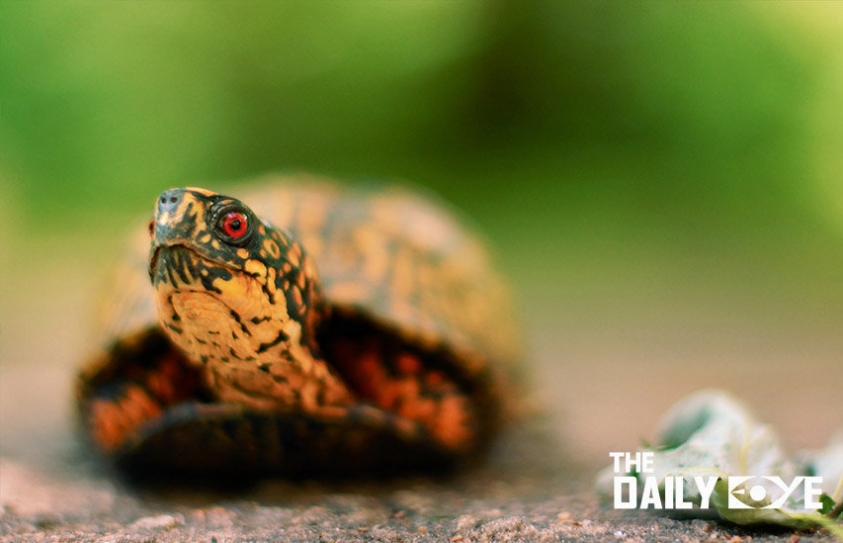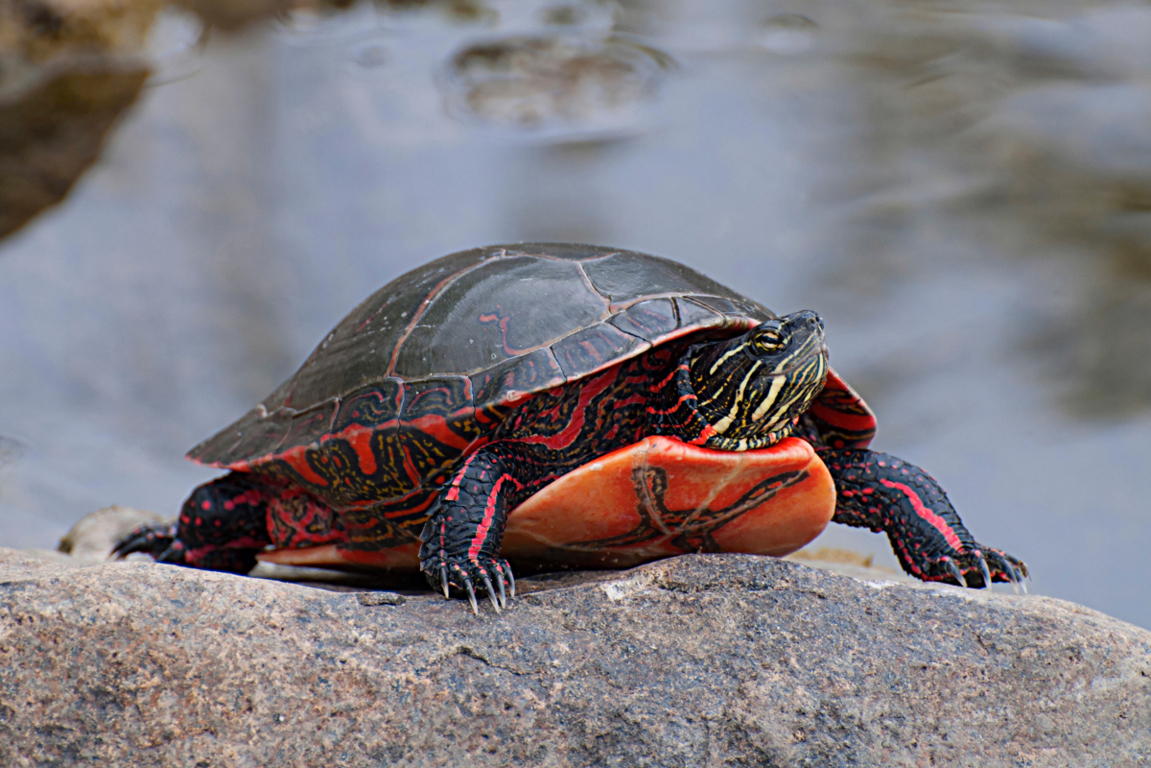
Western Painted Turtles face Extinction due to Global Warming
by Yash Saboo January 15 2018, 3:00 pm Estimated Reading Time: 2 mins, 59 secsA trio of Iowa State University researchers has predicted, in a paper published in The American Naturalist, that the painted turtle (Chrysemys picta) faces extinction over the next century due to global warming. Research conducted by the team suggests that as the planet warms, painted turtles will begin to produce female-only offspring, leading to the gradual extinction of the species.
The western painted turtle is one of the four recognized subspecies of the painted turtle in North America. These subspecies are delineated based on the geographic separation of different species populations. People consider painted turtles some of the most attractive turtles, making them popular in the pet trade. Their smooth dark upper shells are accented with bold red or yellow borders, and they have bright red or yellow stripes on their legs, tails, and necks. Of the four subspecies, western painted turtles are the largest, growing to between 4 and 10 inches long. Western painted turtles also boast the most intricate coloured patterns of any of the subspecies.

Source :PetPonder
Painted turtles are not currently listed as endangered. That will change soon, however, predicts the ISU team, because the gender of their offspring is determined by ambient air temperatures while the young are still growing inside their eggs.
Team member Fredric Janzen has been studying the nesting habits of painted turtles for over 25 years—he's found that painted turtle nesting, like that of many other reptiles, is impacted by how warm or cold it is outside. Warmer temperatures result in more females being born, while colder temperatures result in more males.
Using data from Janzen's research, the new effort entailed creating mathematical models that could predict the gender of painted turtles before they hatched. The team found a success rate of 40 out of 46. Their models show that an average increase in temperature of just 1.1 °C would be enough to cause the turtles to produce all female clutches. The general consensus among Earth scientists is that average temperatures in North America will increase by approximately 4 °C over the next century, which unless something changes, will spell almost certain extinction for the painted turtle.
Painted turtles are able to adjust the timing of their egg laying, the team notes, by as much as 10 days. If it grows unnaturally warm in the spring, the females will begin laying eggs early. Similarly, if there is a late spring, the turtles can put off laying their eggs a few days in the hopes it will grow warmer.
But that won't be enough to prevent all-female clutches in the future, the team says—even if the turtles make simple adaptations, such as laying eggs in the shade—it won't help because it will still be too warm. Painted turtles have long life spans and take a long time to mature and because of that, won't be able to evolve at the pace of global warming, the team says. They will simply run out of time.
While its humanly impossible to change the climate conditions enough to save all the turtles but we can make an effort to save as many as we can. Turtles can reproduce starting around age five, after which they can reproduce every year for another 20 to 25 years. “That rate of generation time really slows the ability of populations to evolve,” ISU biologist Rory Telemeco explains. “It means that you would need dramatic evolutionary changes within just a few generations for them to be able to cope with the types of environmental change we’re predicting over the next century.”




-173X130.jpg)
-173X130.jpg)
-173X130.jpg)
-173X130.jpg)
_(1)-173X130.jpg)

-173X130.jpg)
